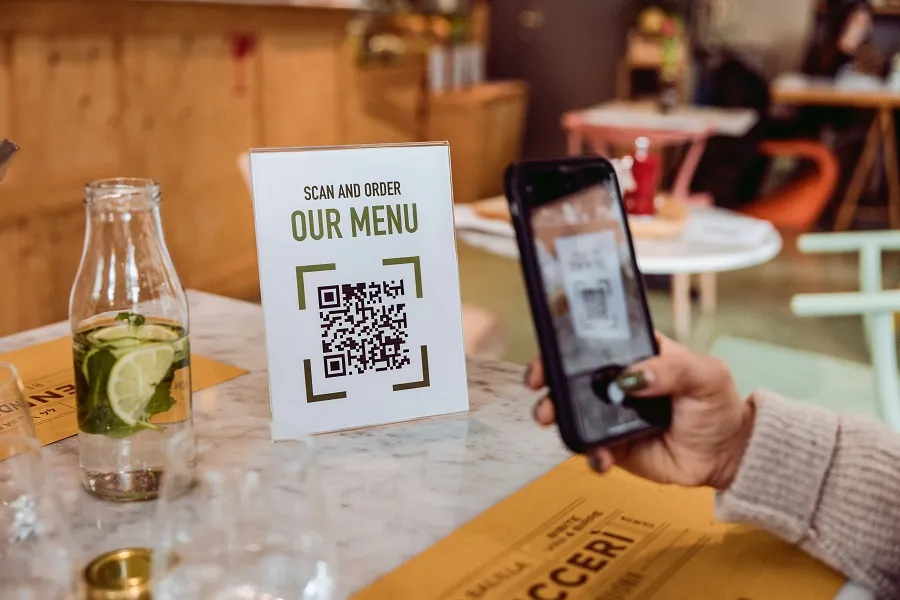In the wake of the COVID-19 pandemic, the hospitality industry has had to adapt to new health and safety guidelines to ensure the well-being of both customers and staff. One significant change has been the shift towards contactless experiences, and this includes the use of contactless menus. Quick Response (QR) codes have emerged as an essential tool in enabling contactless menu browsing and ordering. In this article, we will explore how QR codes have become indispensable in the restaurant industry, providing a safer and more convenient dining experience.
- Seamless Menu Access QR codes provide a seamless way for diners to access menus using their smartphones. Instead of handling physical menus that may have been touched by multiple people, customers can simply scan the QR code placed on the table or displayed at the entrance using their smartphone camera or a QR code reader app. This process eliminates the need for physical contact and reduces the risk of cross-contamination, creating a safer dining environment for everyone involved.
- Digital Menu Flexibility QR codes allow restaurants to offer dynamic and flexible menus. With traditional printed menus, it can be time-consuming and costly to update them with new dishes, seasonal specials, or price changes. However, with QR codes, menus can be easily updated in real-time. Restaurants can make immediate changes to the digital menu, ensuring that customers have access to the most current offerings. This flexibility enables establishments to adapt to changing circumstances and provide customers with an up-to-date dining experience.
- Enhanced Menu Descriptions and Multimedia Content QR codes enable restaurants to enhance menu descriptions and provide multimedia content. By linking QR codes to online menus, restaurants can provide detailed descriptions of dishes, including ingredients, allergen information, and preparation methods. They can also include images, videos, or audio clips to showcase the presentation and flavors of the dishes. This multimedia approach engages customers and enhances their dining experience by providing a more immersive and informative menu browsing process.
- Integration of Nutritional Information and Dietary Preferences QR codes can incorporate nutritional information and accommodate dietary preferences. Restaurants can provide customers with easy access to nutritional details, including calorie counts, macronutrient breakdowns, and allergen information by linking QR codes to online resources. Additionally, QR codes can allow customers to customize their orders based on dietary preferences, such as vegetarian, vegan, gluten-free, or dairy-free options. This integration helps customers make informed choices that align with their dietary needs and preferences.
- Streamlined Ordering and Payment QR codes enable streamlined ordering and payment processes. Once customers have browsed the digital menu, they can use the same QR code to place their orders directly from their smartphones. This eliminates the need for physical interaction with waitstaff, reduces waiting times, and enhances the overall efficiency of the dining experience. Furthermore, some QR code systems even allow for contactless payment, allowing customers to settle their bills securely without the need for cash or credit card transactions.
- Environmental Sustainability QR codes contribute to environmental sustainability by reducing paper waste. With traditional paper menus, restaurants often face the challenge of printing large quantities of menus, leading to significant paper consumption and waste. By adopting QR code-based menus, restaurants can significantly reduce their environmental footprint by eliminating the need for paper menus altogether.
In conclusion, QR codes have become an essential tool for contactless menus, providing a safer and more convenient dining experience for both customers and restaurant staff. They enable seamless menu access, offer flexibility and dynamic content, integrate nutritional information and dietary preferences, streamline ordering and payment processes, and contribute to environmental sustainability. As the hospitality industry continues to adapt and prioritize health and safety measures, QR codes will remain an invaluable tool, transforming the way menus are accessed and enhancing the overall dining experience.





